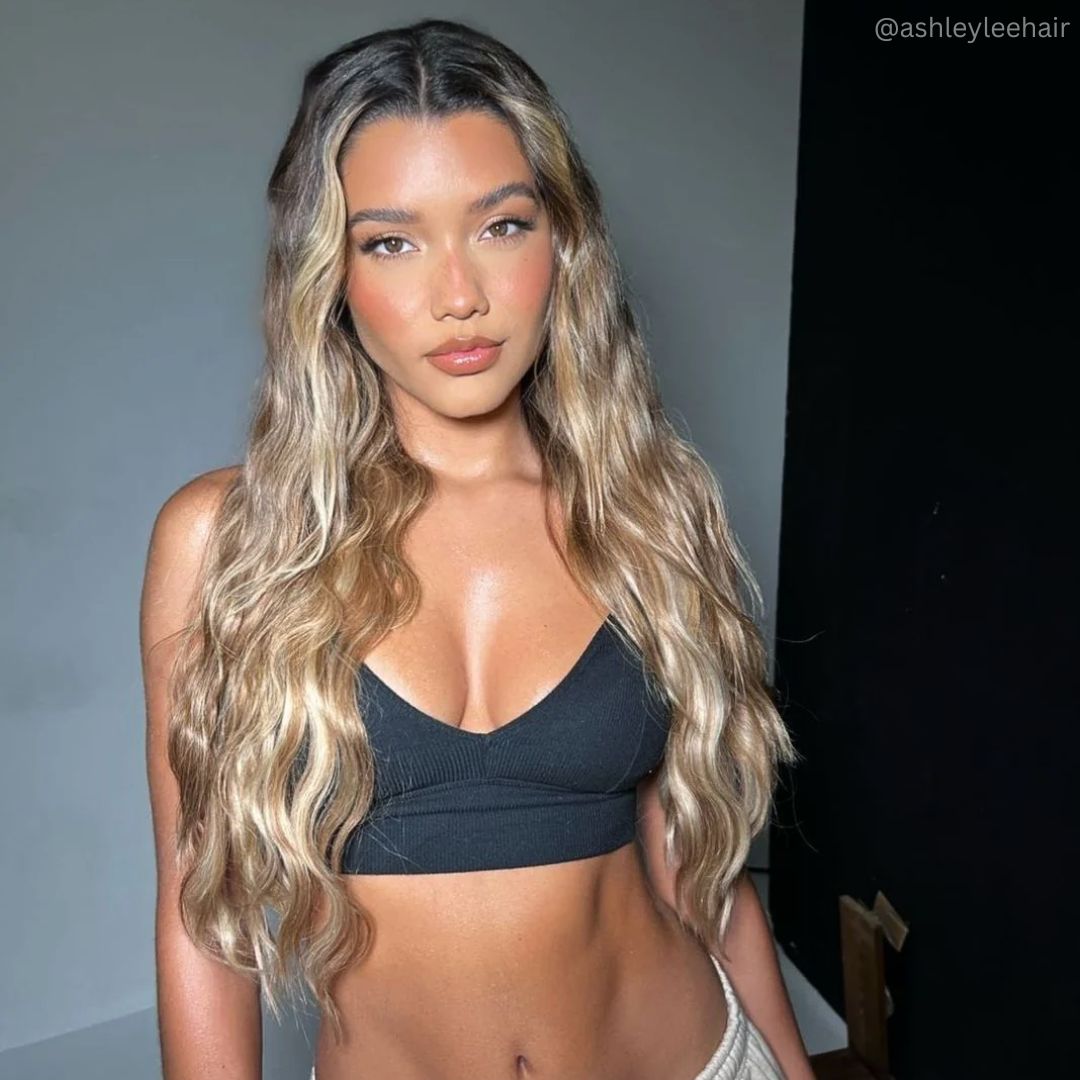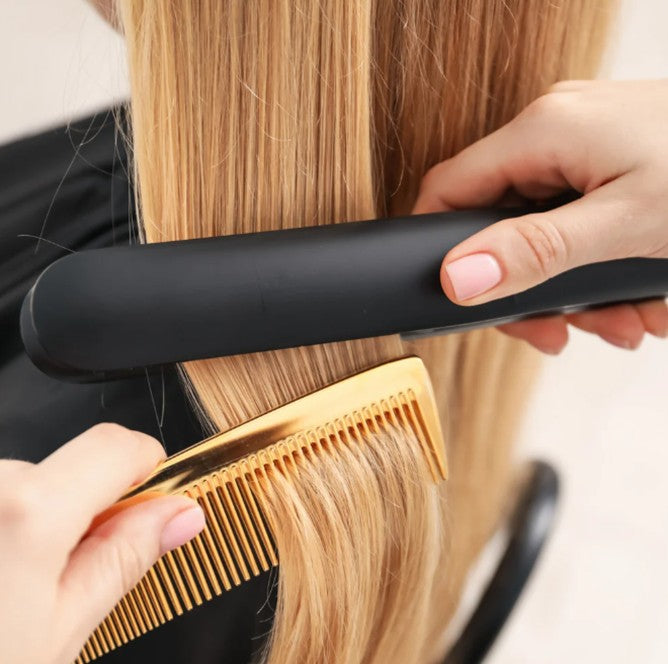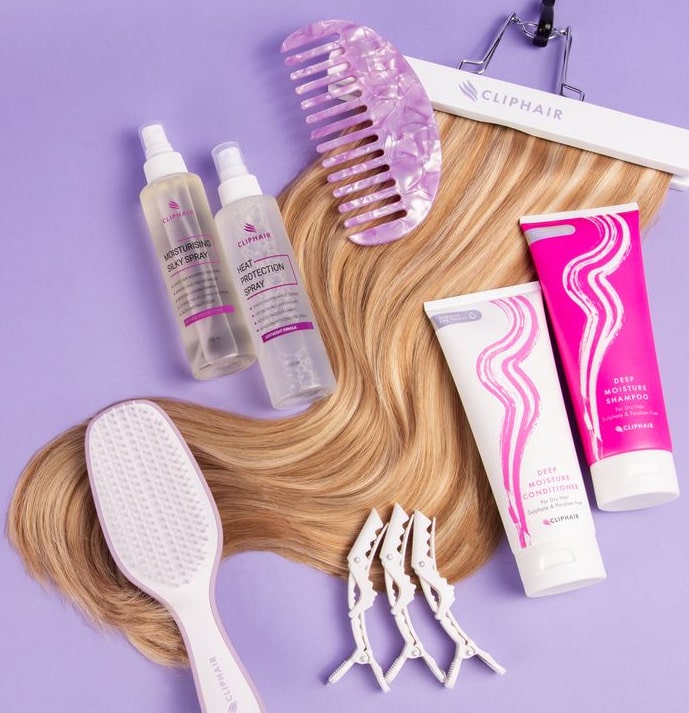How To Stop Clip In Hair Extensions Slipping
by BRENDA L. / 9. DEZ 2022

Reading Time: 5 Minutes
Index
Struggling with clip-in hair extensions slipping out at the worst moments? We've all been there! There’s many reasons your extensions could be slipping, you could be wearing the wrong type for your hair, not applying them properly or simply using the wrong hairbrush! So if you’re asking yourself "why are my hair extensions slipping?" or worse, "why are my hair extensions falling out?" read on to find out why.
Learn essential tips and tricks to ensure your clip-in extensions stay securely in place all day, giving you that flawless finish without the fuss. Trusted by beauty gurus and extension lovers worldwide, our proven methods will leave you feeling confident and ready for anything. Need a refresher on how to properly secure your clip-ins? Check out our step-by-step guide and say goodbye to slipping for good!
Why Do Clip In Hair Extensions Slip?
If your hair extensions are slipping, this may be due to two major factors: a) your hair type, and b) your chosen hair extensions type. Silky, thin tresses are usually the culprit when clip in hair extensions struggle to hold on. If your hair extensions feel too heavy, you didn’t section your hair properly and the clips are holding on for dear life attached to the world’s thinnest strand of hair, chances are that the extensions will slip out.
How To Stop Clip In Hair Extensions From Slipping?
Luckily, there are a few things that you can do to stop your clip in hair extensions from falling off. Let’s see together how.
Pick The Right Type Of Hair Extensions
First things first, you need to make sure you select the right type of hair extensions for you. If you have already invested in clip in hair extensions in the past and it didn’t work well for you, chances are they were not the right product to target your problem. If you have fine hair, opt for a more lightweight option such as seamless hair extensions rather than going for a thicker, heavier type of clip ins.
Learn To Properly Section Your Hair
Our seamless hair extensions come in eight pieces to fit different areas of your head; this means that you’ll need to be able to section your hair properly to wear them. If a section is too thin, your clip in hair extensions are more likely to slip off at the first opportunity. If a section is too thick, chances are the clips will struggle to have a strong grip and may “pop” off as they don’t have any room to safely clip on.
Choose The Right Tools
In order to properly section your hair, you’re likely to need sectioning clips and a rat-tail comb. Sectioning clips are used by professional beauty technicians and hair stylists to keep hair in neat sections. They're designed to hold large amounts of hair in place for an extended period of time without falling off. They can come in different colours and patterns, they’re lightweight and generally made of plastic. Similarly, rat-tail combs can come in different colours and materials. The tail is usually metal and the combing part is often made of colourful plastic; both of these tools can be bought online or in a professional shop for a fairly cheap price.
Use The Right Products
Even medium thick hair needs a little support to hold clip in hair extensions. Professional hair extensions technicians know this, and usually you will see them working around your roots with a special powder before fitting the clip ins. The powder is a texturising product, used close to your roots to give your strands volume and thickness.
Sexy Hair’s Powder Play Volumizing and Texturing Powder is fairly cheap (you can get it online for less than £20) and will boost your strands to get that extra grip with your clip ins! With its weightless, odourless, and colourless formula, this product adds texture and gives any hair type some quick oomph without a fuss.
Backcomb Your Hair
In most cases, especially with fine or straight hair, backcombing is a must as it creates a mini nest of texture for the clips to grip on too preventing them from slipping. It's also a fab way to add volume and body to your hair when it’s feeling a little flat. Just remember to use soft and gentle movements rather than frantic combing that could damage your hair and always brush out you’re backcombing before bed.
Braided Base Clip In Hair Extensions
In some cases, especially if you are aiming to wear your clip in hair extensions for a long period of time, it can be useful – assuming that your hair type allows it – to start with a braided base to ensure a strong grip and long-lasting hold for your clip ins. Braiding the hair on the lower part of your head is also a great way to hide short hair that can be really hard to blend into your clip-ins.
A small cornrow can be an excellent starting point for your clip ins to hold tight; not many hair stylists are trained to do this properly, so you should consult with a hairdresser specialised in braids. Certain hair types, however, can get damaged by this type of tight braiding which is usually used as a protective hairstyle for coarser strands. Speak to a professional before trying this yourself!
Can Hairspray Prevent Hair Extensions From Slipping?
Hairspray is a great tool to give your hair a touch of extra hold! Slightly teasing your hair (just a touch, no need to aggressively backcomb your tresses) and adding hairspray on the section where you will fit your clip ins on is an easy yet effective method to get a strong grip for your hair extensions.
Conclusion:
To keep your clip-in hair extensions from slipping, always start with clean, dry hair for the best grip, tease the roots where you’re placing the clips, and use hairspray for extra hold. If you’ve ever wondered “Why are my hair extensions slipping?” or “Why are my hair extensions falling out?”, it’s often due to improper application or the wrong hair type for your extensions. That’s why it’s so important to invest in high-quality clip-ins, like ours. Designed for secure, long-lasting wear, Cliphair’s extensions stay in place, giving you confidence all day long. Want to keep your clip-ins secure? Check out our range of luxury clip ins for a flawless fit!
FAQs
Was sind die besten Techniken, um zu verhindern, dass Clip-In-Erweiterungen rutschen?
Zu verhindern clip-in extensions Vom Ausrutschen ist es wichtig, mit sauberem, trockenem Haar zu beginnen. Vermeiden Sie es, schwere Conditioner oder Öle auf den Wurzeln zu verwenden, wenn Sie unsere verwenden Pintail Comb Da können sie das Haar beim Schneiden und Entwirren zu rutschig machen. Darüber hinaus werden Ihr natürliches Haar ein wenig necken oder zurück, wo die Clips platziert werden, um einen sichereren Griff zu erzeugen. Stellen Sie sicher, dass die Clips gleichmäßig verteilt und sicher befestigt sind, um eine Bewegung zu vermeiden.
Können die Verwendung spezifischer Produkte dazu beitragen, dass die Ausgrenzung ausgleichen?
Ja, die Verwendung spezifischer Produkte kann dazu beitragen, die Clip-In-Erweiterungen zu halten. Wenn Sie ein hellhaltiges Haarspray oder ein texturierendes Spray auf Ihr natürliches Haar auftragen, bevor Sie in Erweiterungen einschneiden, können Sie mehr Reibung erzeugen und die Clips dabei helfen, sicher angebracht zu bleiben. Sie können auch ein Root-Boosting-Pulver für zusätzlichen Griff verwenden. Seien Sie jedoch vorsichtig, Produkte nicht zu übertragen, da dies das Haar zu klebrig oder fettig machen kann.
Wie kann ich Clip-In-Erweiterungen richtig installieren, um sicherzustellen, dass sie eingestellt bleiben?
Um unsere richtig zu installieren clip-in extensionsBeginnen Sie damit Pintail Comb Und Alligator Sectioning Clips. Stellen Sie vor dem Hinzufügen Ihrer Erweiterungen sicher, dass Sie den zusätzlichen Griff gründlich zurückziehen, und öffnen Sie sie vorsichtig ihre Clips und positionieren Sie sie in der Nähe der Wurzeln und stellen Sie sicher, dass der Clip mit Ihrem natürlichen Teil ausgerichtet ist. Drücken Sie die Clips fest und stellen Sie sicher, dass sie sicher befestigt sind, indem sie vorsichtig an ihnen ziehen, um die Stabilität zu überprüfen. Beginnen Sie für die besten Ergebnisse mit den unteren Abschnitten Ihres Haares und arbeiten Sie sich nach oben, wobei Sie die Erweiterungen nahtlos mit Ihrem natürlichen Haar verbinden.
Gibt es Tipps zur Aufrechterhaltung von Clip-In-Erweiterungen den ganzen Tag über?
Aufrechterhalten clip-in extensions Vermeiden Sie es den ganzen Tag über, sie häufig zu berühren oder anzupassen, da dies dazu führen kann, dass sie sich verschieben. Wenn Sie Bewegung oder Beschwerden bemerken, passen Sie die Clips vorsichtig wieder ein. Wenn Sie Ihre Haare in einem lockeren Stil wie einem niedrigen Pferdeschwanz oder einem Brötchen binden, können Sie übermäßige Reibung und Bewegung verhindern. Darüber hinaus kann das Tragen eines kleinen Kamms oder Pinsels für schnelle Nachbesserungen nützlich sein, um sicherzustellen, dass Ihre Verlängerungen glatt und gut gemischt bleiben.
Suchen Sie makelloses, salonwürdiges Haar, ohne die Bank zu sprengen? Bei Cliphair haben wir für Sie luxuriöse Clip-In-Haarverlängerungen für schnelle Transformationen und dauerhafte Haarverlängerungen für langanhaltenden Glamour. Extensions benötigen besondere Pflege und Wartung, um ihre Qualität zu erhalten. Deshalb haben wir alle erstklassige feuchtigkeitsspendende Haarpflegeprodukte erforderlich, um Ihren Stil auf den Punkt zu bringen.
Brauchen Sie den perfekten Farbton? Stöbern Sie durch unser komplettes Sortiment an Echthaar-Extensions in über 70 satten, seidigen Farbtönen oder schauen Sie sich unsere KOSTENLOSER Express-Farbabgleichservice um jedes Mal eine nahtlose Mischung zu gewährleisten.






